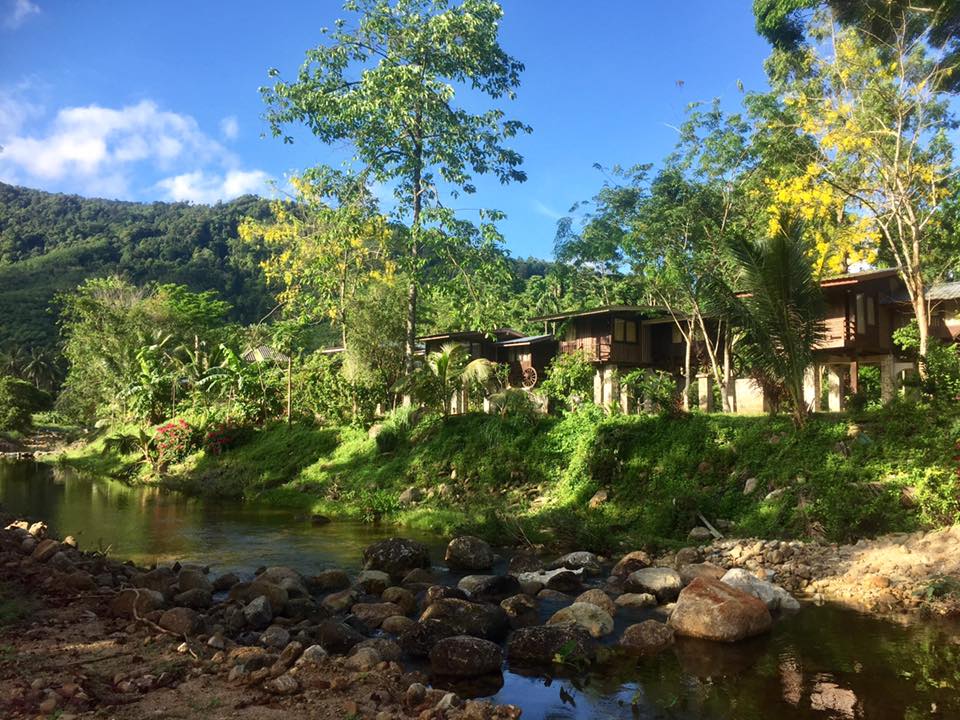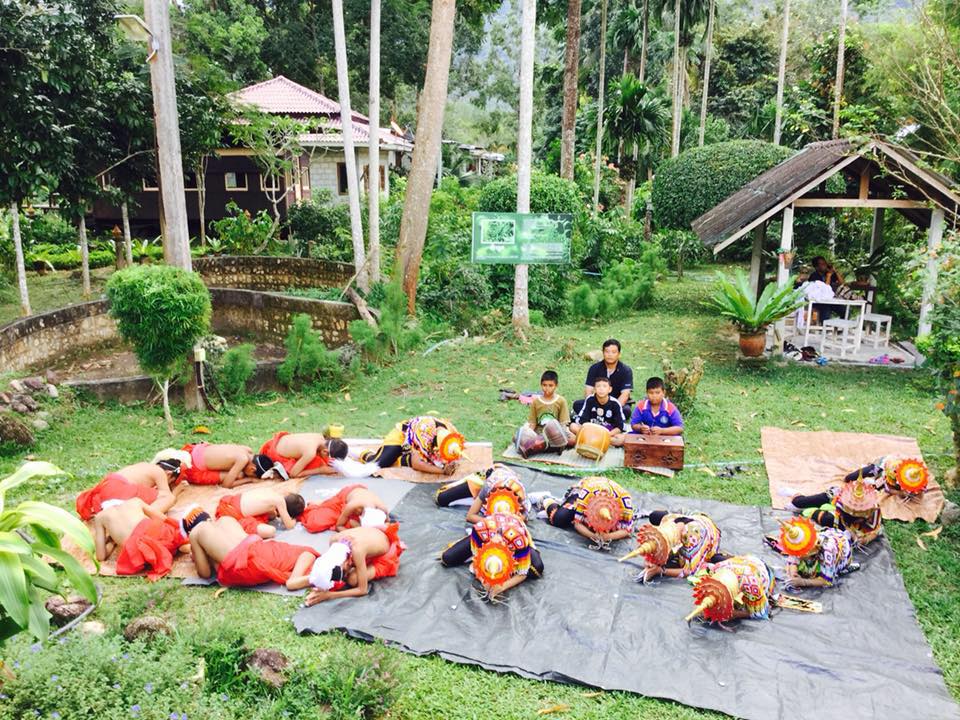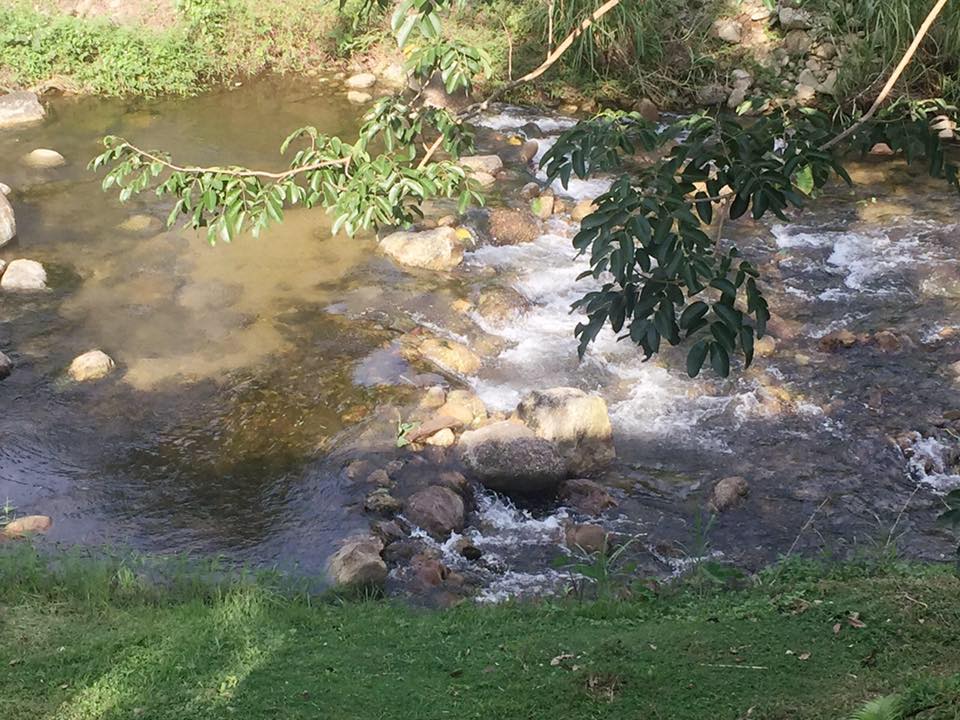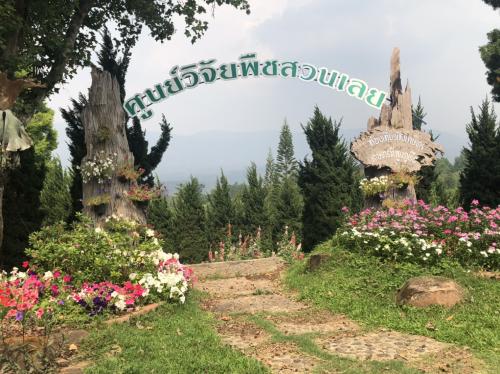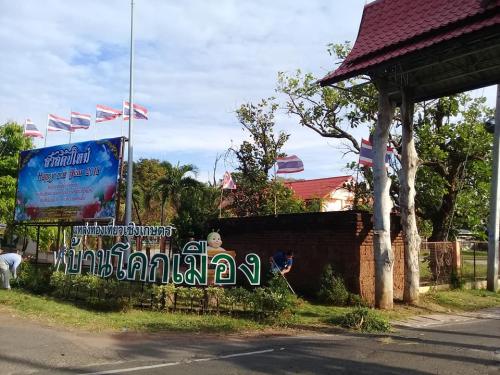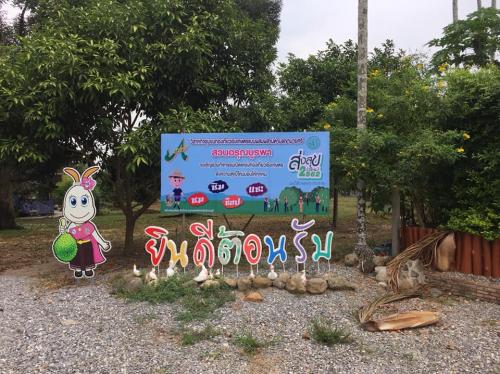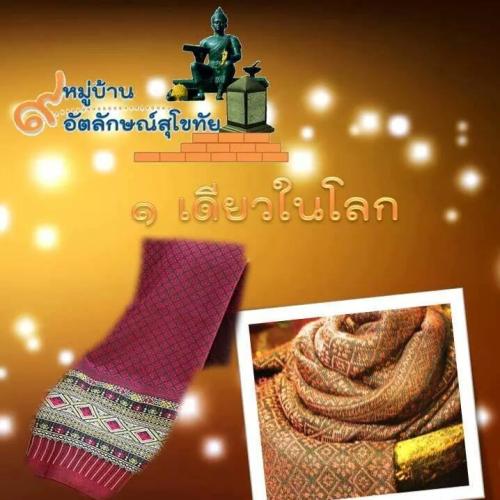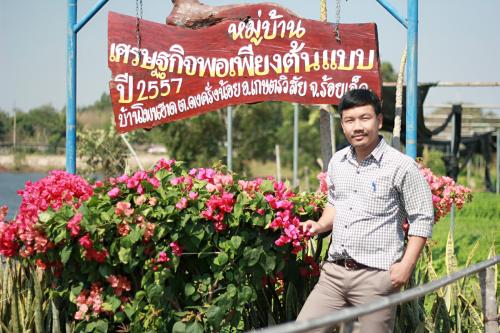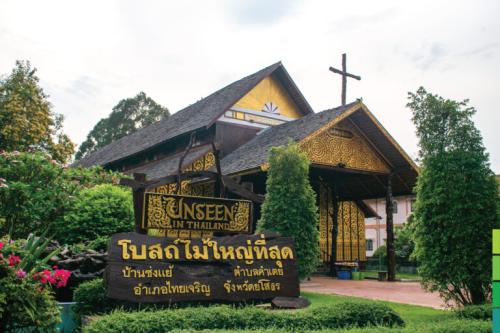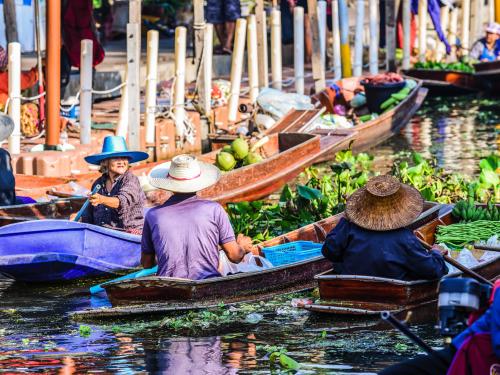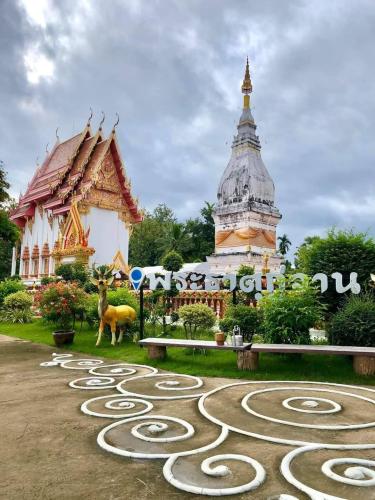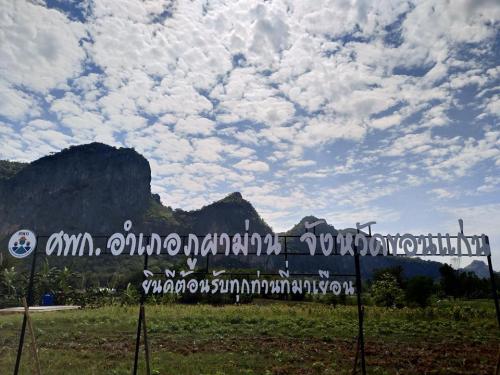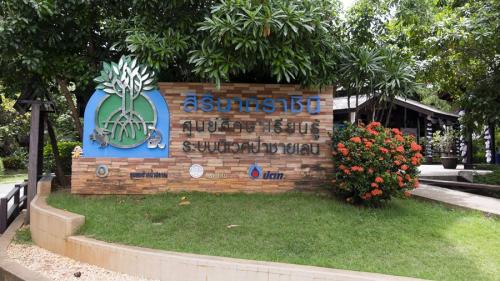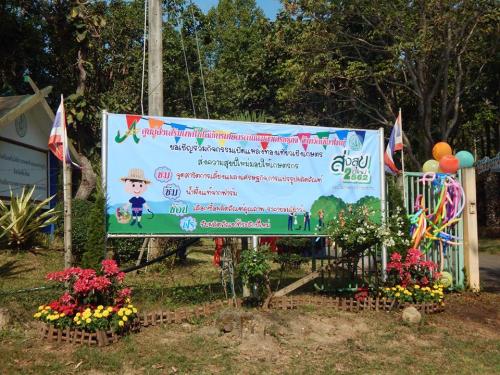Weather
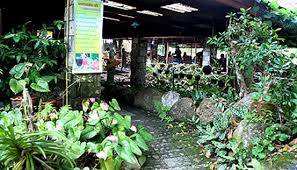
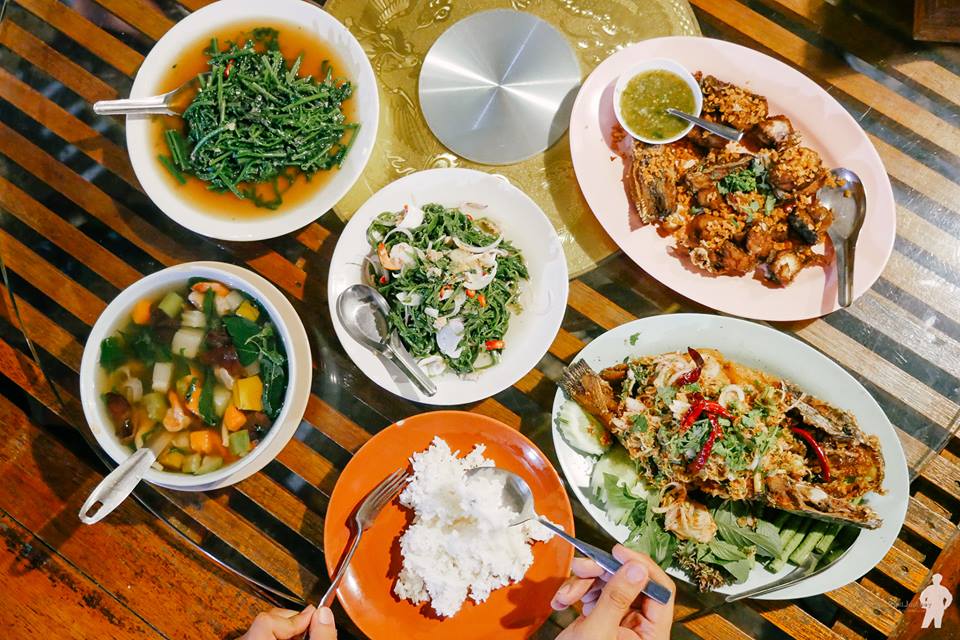
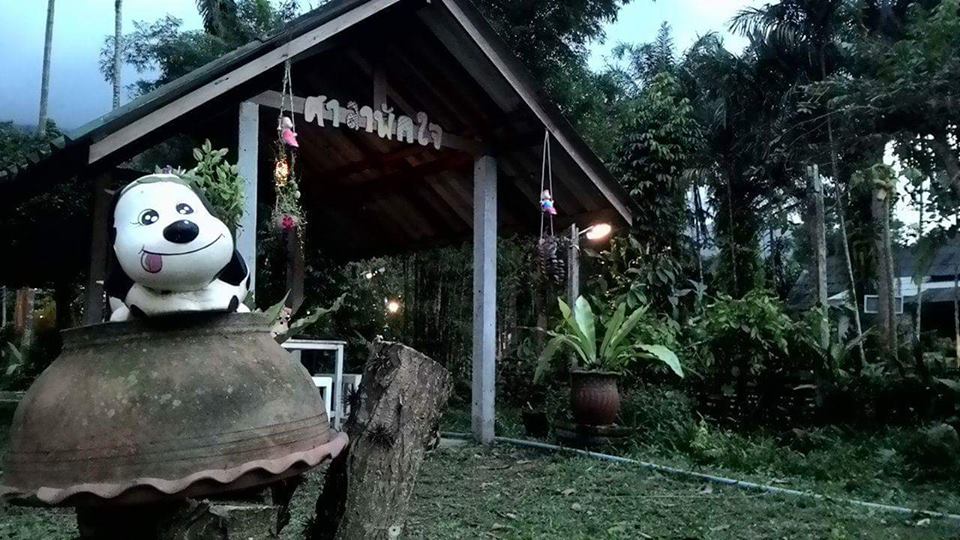
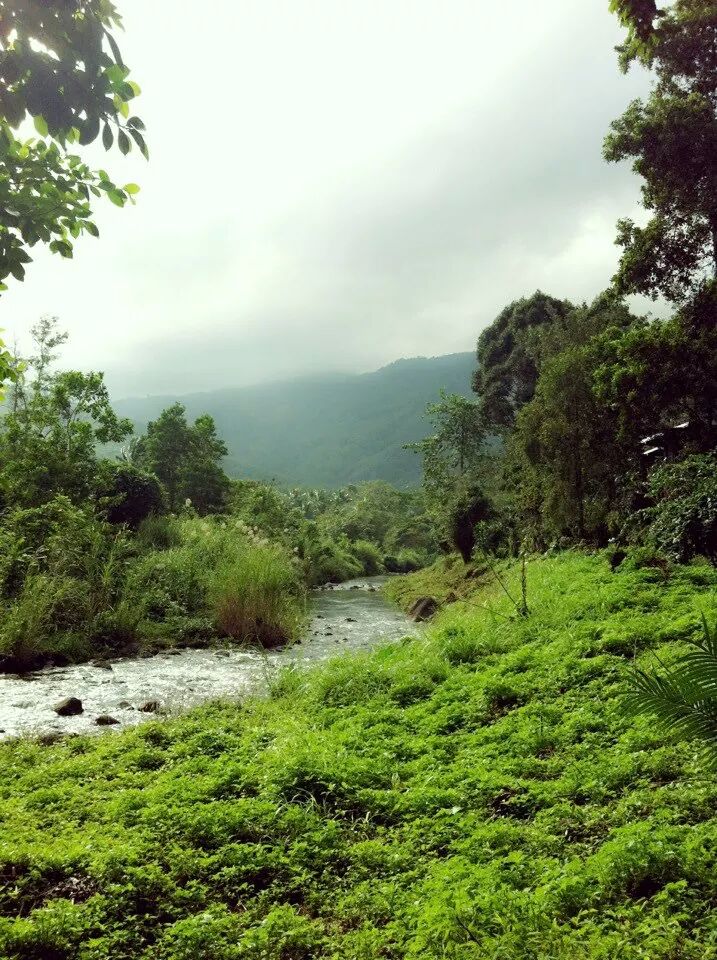
Closed
Business hours
• Sunday
: 09:00 - 16:00
• Monday
: 09:00 - 16:00
• Tuesday
: 09:00 - 16:00
• Wednesday
: 09:00 - 16:00
• Thursday
: 09:00 - 16:00
• Friday
: 09:00 - 16:00
• Saturday
: 09:00 - 16:00
Note
: -
Map
Review Score
0
Information
Ruen Phak Kut is the location of the Chang Klang Agricultural Tourism Club to be a coordinating center for agricultural tourist attractions and network of agricultural tourist attractions in the Chang Klang sub-district, there are meeting rooms, rooms and activity grounds.
Source
Thailand Tourism Directory
Recommended
Entrance fees
• Entrance fees: Non-fee
• Remark : -
Review (0)
Write Review
0
จาก 5.0
Availability
Value
Service
Relate Agritourism
In the past, the Phu Ruea High Altitude Agricultural Experiment Station was to test the winter fruit varieties for planting in the northeastern highlands, including apple cultivars. and peach varieties for eating fresh In addition, Phu Ruea High Land Agricultural Experiment Station has also made efforts to collect and study grape varieties for making wine, including grapes for eating fresh, to develop varieties and encourage farmers in Loei Province to continue planting.
Loei
1. Form of activity: see and study the production process of jasmine rice, volcanic soil, weave mat demonstrate, fabric dyeing from soil at Ba Rai holy well. Sightseeing plant herb production area and herbal processing, buy some souvenir or product and agricultural goods, OTOP center. You can try yummy food in KhanToke style and see Apsara Dance, see view by bicycle, take a rest at homestay, visit rural market in the morning.
2. The way of community: cultivation, southern east livelihood, traces of Khmer civilization.
3. The Participation of tourist: tour, taste, shopping, snap, share, do and learn agricultural station.
Tourism Program
2 days 1 night
Frst day, Check in at the accommodation, rent some bicycle, see how to produce volcanic jasmine rice station, see how to plant vegetable and herbal processing, having lunch at Baray reservoir. Afterwards, visiting at Mueang Tum Ruin, see around the community by bicycle in the evening then make some traditional dinner at homestay (KhanToke style and see Apsara dance but it is depend on coustomer's demand because it is an extra charge), lie down at homestay.
Day 2 Visit morning rural market, give food to the monks, have a meal at homestay, weave mat demonstrate and fabric dyeing from soil at Ba Rai holy well, weave fabric as Paco Fern pattern (Pak Krood) and buy some silk fabric with Pak Krood pattern at The OTOP center, go up the hill to visit Khao Phanom Rung National Park
The route that linking with the others tourist attraction
1. Mueang Tum Ruin distance 500 meters.
2. PhanomRung Historical Park distance 5 kilometers.
3. Phu Akkanee Dye Fabric group distance 23 kilometers.
4. Wat Khao Ang-Karn Chaloem Phra Kiat district distance 25 kilometers
Buri Ram
Garden No. 1 Sala Hietuk Park: For those who love eating Salak; come here, and you will be delighted with the taste and the friendly nature of the owner of the garden. Sala Hietuk Garden offers a tour of the garden. See the way of life of the villagers and taste fruits. There are fresh fruits for you to buy and take home as well.
Activities: Eat fruit (400 Baht/person), visit the garden, Learn about fruit garden and fresh fruits for sale
Garden No. 2 Isaree Garden, Thai Horse Farm: it is suitable for family trip, a group of friends, or private trip
Activities
• Learn organic farming
• Horse riding through the orchard
• Ride a tram through the orchard
• Learn soap making
• Hippo therapy
• Demonstration of durian processing, tasting durian chewing gum, cake
• Eating fruit 400 Baht per person
• Accommodation in a homestay
Garden 3, Suan Wadi Activities:
• Visit the garden
• Eat fruit 400 Baht per person
• Fresh fruit for sale
Garden 4, Arun Burapha Park: this is a place to see the garden, taste the fruits and buy the products to take home. Come out and visit Wat Khao Sukim to see the beauty of Khao Sukim Temple Museum.
• Biking around the garden
• Learn how to process fruits such as fried durian, durian crackers
• Learn how to plant and care for a durian garden
• Eat fruit (400 Baht per person)
Garden No. 5 Rinradee Park Activities
• There are 3 rooms of hotel accommodation with breakfast for 10 persons (1 room for 2 people, 2 rooms for 4 people)
• WiFi service
• There is a security system with CCTV
• There are activities for sightseeing, tasting, all-you-can-eat fruits, rambutan, durian, mangosteen, Langsat
• There is a shuttle to take you on an adventure in the orchard. Go to see durian varieties, see Salak trees and take a walk in the orchard.
• There is a playground, swings, merry-go-rounds, arched bridges
• There are toilets for women, men and people with disabilities
• On the viewpoint, you can see Khao Khitchakut, Khao Sukim, Khao Chab, Khao Luk Chang - Come see the windmills that generate electricity
• Fruits and vegetables in the garden for sale such as rambutan, durian, mangosteen, Langsat at a cheap price
Tour program:
Visit the orchard, without eating fruit 50 Baht per person,
Visit the orchard, and eat fruit 400 Baht per person
Accommodation including breakfast
For 2 people, price 990 Baht
For 4 people, price 1,990 Baht
Those who stay and eat fruit will be charged only 350 Baht per person from 400 Baht
Travel calendar:
accommodation, garden tour = all year
Visit the garden / eat fruit = end of April - end of July or until the fruit runs out
Products
Crispy Durian
Dried Durian Paste
Pepper
Fresh fruits: rambutan, mangosteen, Langsat, Durian
Route links with other attractions (with distance/km)
- Wat Khao Sukim, 8 kilometers
- Chao Lao Beach, Tha Mai District, 25 kilometers
- Krathing Waterfall, Khao Khitchakut District, 20 kilometers
- City Pillar Shrine, 20 kilometers
- Waterfront Community Market, 20 kilometers
- Samet Ngam Shipyard, 25 kilometers
- Khao Bai Sri Agricultural Tourism, 15 kilometers
Community Enterprise Products
- Fresh seasonal fruit
- Fried Durian
- Dried Durian Paste
- Durian Crackers
- Pepper
- Durian Cake
Chanthaburi
The villagers of Ban Na Ton Chan have a traditional way of life mixed farming. There is mud fermented cloth which made into a good weight fabric. It is beautiful with mud fermentation and intricate weaving. Villagers have adjusted the area for camping. Raise the bamboo litter to make a seat for eating, make a toilet, the rest is still in the same condition as before. This mountain ridge has beautiful scenery. Visitors can watch the sunrise and sunset at the same point.
There are about 23 homestays in Ban Na Ton Chan, living separately or in the same house as the owner of the house. Visitors can indulge in the nature around the accommodation with a fully equipped kitchen, they can buy food, cook, and eat comfortably.
There are cycling activities to see the way of life in the village. See orchards and fields with a community guide and visit the fruit orchards of the villagers are some activities.
Tourism program :
- Stay at Baan Na Ton Chan homestay which currently has a total of 23 houses.
- Biking to see the way of life in the village, visiting fruit orchards and fields.
- Watch how to make mud fermented cloth, weaving by hand, Yok Dok cloth, and buying ready-made mud fermented fabrics.
- See how to make a barn doll (Ban Ta Wong)
- See stump handicrafts
- See and taste seasonal fruits such as durian, rambutan, longkong, mango, maprang, mafai, longan.
- View point "Huai Ton Hai" to watch the sea of mist and the sun
- Watch and test how to cook rice and local food, and sip coffee in a bamboo tube.
Route links with other attractions:
- Si Satchanalai Historical Park Si Satchanalai District, 30 kilometers
- Antique gold shop, antique silver shop 30 kilometers
- Namtok Pa Kha National Park 70 kilometers
- Sukhothai Historical Park (Old Town Sukhothai) 77 kilometers
- Ramkhamhaeng National Park 110 km.
Sukhothai
Phon Had Village is a sufficiency economy village, an organic vegetables source, organic rice, delicious insects, listening to vegetable lullabies as a source of fanaticism. The only place in Roi Et according to the Philosophy of Sufficient Economy. The village is famous for its delicious insects, excellent craftsmanship. Familiar with pesticide-free vegetables Muan I Lee Bun Bang Fai Tradition, worshipping the great god, the legend of Phraya Had Phraya Thon
Roi Et
Ban Song Yae Christian Church is located in Thai Charoen district, Yasothon. There is a history in 1908 that there were 5 families who fled from different places to live in this area, they fled for the same reason, which was accused being ghouls and they were therefore attacked and drove away.
It is the 4th church, planned for construction in 1936. Villagers gathered wood and built it in 1947. The shape of the church was built in Thai art style, width 16 meters, length 57 meters. It is the largest in Thailand, using 80,000 wooden planks as roofing boards, using 360 columns of different sizes, mostly wooden poles. The pillars in the middle row are the largest and longest with 260 trees, more than 10 meters high from the ground. The floor planks are of red wood and large Takhian wood. The wooden bench can hold over a thousand people.
The church bell has a diameter of almost 2 feet in a tall bell tower built in the style of a bell tower in typical Thai temples. But strange that it is separate from the church and because the wood that has been gathered is a lot Therefore, the remaining wood was used to build Ban Song Yae Pittaya School.
Yasothon
See, taste, shop, community products at Tha Kha Floating Market. (The floating market is held every Saturday. Sunday and public holidays and every day of the 2nd waning, 7th waning and 12th waning days)
- Take a paddle boat to see the nature along the canal Along the route of His Majesty King Rama V at Ban Kamnan Chan, an old Thai house. (Book before visiting Ban Kamnan Chan)
-Visit community activities Participate in activities based on various learning bases of the farm housewives group. Tha Kha Floating Market from the story of the coconut See the wisdom of making coconut sugar, including
- Harvesting coconut sugar from the tree
- Traditional way of simmering coconut sugar
- Add sweetness, learn how to make traditional sweets from Tha Kha coconut sugar
- Weaving coconut stalks Traditional wisdom of Tha Kha people
- Weaving with fresh coconut Weave them into hats, baskets, etc.
- Dukdik boat from coconut husks
Samut Songkhram
Phra That Kuchan Located within the Ban Ku Chan Temple is an important sanctuary. People of Yasothon and nearby provinces pay their respects. The appearance is a square lotus-shaped chedi, shaped like Phra That Phanom, but smaller. The part of the lower base in the shape of an inverted lotus is a low facing lotus. Supporting a flat rectangular high base connected with a square lotus shape decorated with exquisite and beautiful patterns in ancient times. and the top of the relic in a square shape, which supports the tiered top From the evidence, it should be built according to the general motto of building relics, namely, to contain the Buddha's relics. Each year, a water bathing ceremony is held to preserve the good traditions.
Architectural features: Phra That Ku Chan, width 5.10 meters, height 15 meters. Location is located at Ban Ngew. In the middle of the courtyard of Wat Ku Chan, Ku Chan Subdistrict, Kham Khuean Kaeo District, Yasothon Province which looks similar to Phra That Phanom. The only difference is the size that Phra That Ku Jan is smaller.
Significance to the community: It is a place of worship for the people of Yasothon and nearby provinces. Every year, the people of Ku Chan sub-district will bring water, perfumes to bathe the relics in the morning of the full moon of the 6th month. In the afternoon, they go to bathe the water ceremony. Ku" after that, they will take them to Nong Sa Phang to bring water from Nong Sa Phang to perform the ceremony Pouring water on relics and bai sema which this ritual must be done annually There is a belief that if the ceremony is not performed, it will cause rain out of season; the villagers of Gu Zhan therefore practice this ritual regularly.
Yasothon
1 agricultural learning ground of Ban Na Nam Sam, 10 grounds as follow:
1) Learning ground for the production of bio-based substances (Trichoderma, Beauveria, BT, wild microorganisms, nematodes)
2) Charcoal/Wood Vinegar Distillation Learning Ground
3) Local egg raising ground
4) Mushroom cultivation ground
5) Organic Asparagus Planting ground
6) Freshwater fish farming ground
7) The composting ground
8) Herbal Refinery Ground
2 Study natural attractions
1) Pha Nam Thip Cave Sacred water from nature
2) Bat Cave, discover the natural wonders of millions of bats.
3) Chompoo Cave
4) Wat Khao Sam Yot
5) Tad Fa Waterfall
6) Tad Tao water
7) Phu Ta Lor Cave
8) Dong Sakran Viewpoint
9) Dong Lan Forest Development Project
3 agricultural learning resources
1) Growing Asparagus
2) Planting and propagating guava
3) Longan orchard generates income
4) Mushroom cultivation for additional income
tourism program
2 days 1 night program
Learn about agriculture at 1-2 ground center > have lunch > visit Pha Nam Thip Cave > watch bats > have dinner > relax at homestay / Phu Pha Man Camp > Asparagus plot > Golden banana plantation > Khao Temple Sam Yot > have lunch > go back
Note – Tour programs and service fees may change as appropriate.
- 3 snacks
1 day program
Learn about agriculture at center 1-2 bases > have lunch > visit Pha Nam Thip Cave > watch bats > go back
Note – Tour programs and service fees may change as appropriate.
- 2 snacks
Route links with other attractions (with distance/km)
1) Pha Nam Thip Cave Sacred water source from nature, a distance of 3 km.
2) Bat Cave, a distance of 6 km.
3) Chompoo Cave, a distance of 4 km.
4) Wat Khao Sam Yot, a distance of 6 km.
5) Tad Fa Waterfall, a distance of 18 km.
6) Nam Phut Tat Tao, a distance of 12 km.
7) Phu Ta Lor Cave, a distance of 16 km.
8) Dong Sakran Viewpoint, a distance of 18 km.
9) Dong Lan Forest Development Project, a distance of 22 km.
Community enterprise products in the community
1 Ban Son Tai Community Shop, Village No. 3, Ban Son Tai, Non Kom Subdistrict, selling Phu Pha Man folk clothes
2 Ban Non Kom Community Shops, Village No. 1, Ban Non Kom, Non Kom Subdistrict, selling local products and souvenirs.
Khon Kaen
It is an agricultural tourist attraction. Learning resource for reducing high production costs from the use of chemical fertilizers. Deteriorate health cause disease to human life, therefore change the concept of improving the quality of production and reduce production costs through integrated pest prevention.
Chai Nat
Sirinat Rachinee Mangrove Ecosystem Learning Center is the first mangrove rehabilitation center from abandoned shrimp farms in Thailand. Originally, it was a shrimp farm located in the Pa Khlong Kao National Forest Reserve - Khlong Khoi, Pak Nam Pran Sub-district. Pranburi District Prachuap Khiri Khan. When the King Rama 9 and the Queen came to Pranburi, The Royal Forest Department responded by canceling the shrimp farming concession and then included as part of the Pak Nam Pranburi Forest Development Project. They accelerated the restoration of mangrove forests and designate them as target areas for reforestation and later develop into a mangrove ecosystem learning center.
Prachuap Khiri Khan
Agricultural Technology Promotion Center for Economic Insects Chiang Mai Province Established in 1980 It is an agency under the Department of Agricultural Extension. Ministry of Agriculture and Cooperatives It plays a major role in research studies. Test and apply economic insect farming technology Promote and transfer economic insect culture technology as a center for development, production, expansion and distribution of economic insect species, as well as providing basic product quality inspection services and diagnosis of diseases and pests of economic insects to farmers and interested parties. It is also a tourist attraction. Agribusiness that is open to both Thai and foreign tourists to get to know and learn about the life of bees and important economic insects of Thailand. Each year, both Thai and foreign tourists visit to study work and travel to the learning points that the center has exhibited, such as learning points on beekeeping, bee breeding, burrow bee, cricket, lac, queen bee, and product processing. and also provide “Honey Shop” product display and distribution point where tourists can watch, taste and buy real, good quality honey and other processed products. of community enterprises and entrepreneurs
Tourism program :
Learning point/base interesting activities
1. Breeding bees. Open house for breeding bees. (Acquaintance with bees, life cycle and well-being of bees in the hive) Keeping and maintaining bee health checks collecting nectar from flowers
and sap. Preliminary analysis of honey quality.
2.Honey bees Wild bees make money. (Get to know the burrowing bees and natural nest building. Traditional poaching beekeeping techniques Modern honey beekeeping Protecting against the pests of honey bees Techniques for collecting good quality honey
3. Chan Rong Open House Chan Rong (Get to know the amazing mini bee, the best pollinator). propagation Nectar, pollen and resin collection behavior of saplings Making resin extracts and their uses
4. Crickets
Crickets are the world's reserve protein food source. Commercial cricket species Standard farming techniques and management Processing crickets as food
Learning point/base interesting activities
5. Shellac: Get to know lac insects/life cycle and benefits. Transplanting plants for lac culture farming techniques Care and harvest Technology for protection and nursery of lac species during the dry season
6. The queen bee opens the experience of finding the queen bee queen in the hive. birth of queen bee The Great Duties of the Queen Bee Techniques for cultivating queen bees
7. Processed products
Watch/Taste/Touch A variety of bee products, natural gifts. The benefits of bee products
Tips for buying honey Processing bee products into products for daily use
Route links with other attractions:
- Chiang Mai Night Safari Night Zoo, distance 750 m.
- Royal Park Ratchaphruek, a distance of 1 km.
- Wat Inthrawat (Wat Ton Kwen), a distance of 2.5 km.
- Wat Phra That Doi Kham, a distance of 4.4 km.
- Baan Tawai Handicraft Center, a distance of 10 km.
- Wiang Kum Kam, a distance of 11 km.
Chiang Mai

